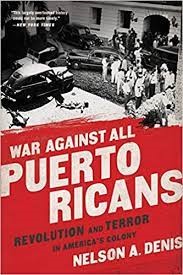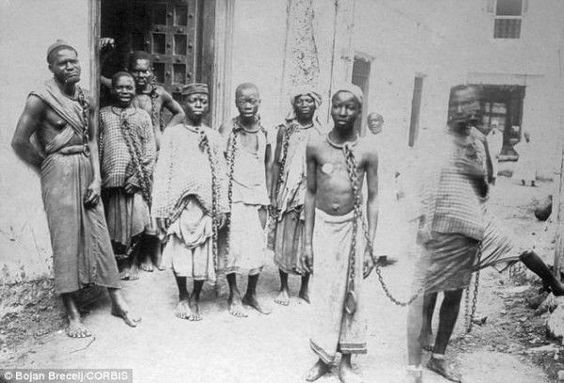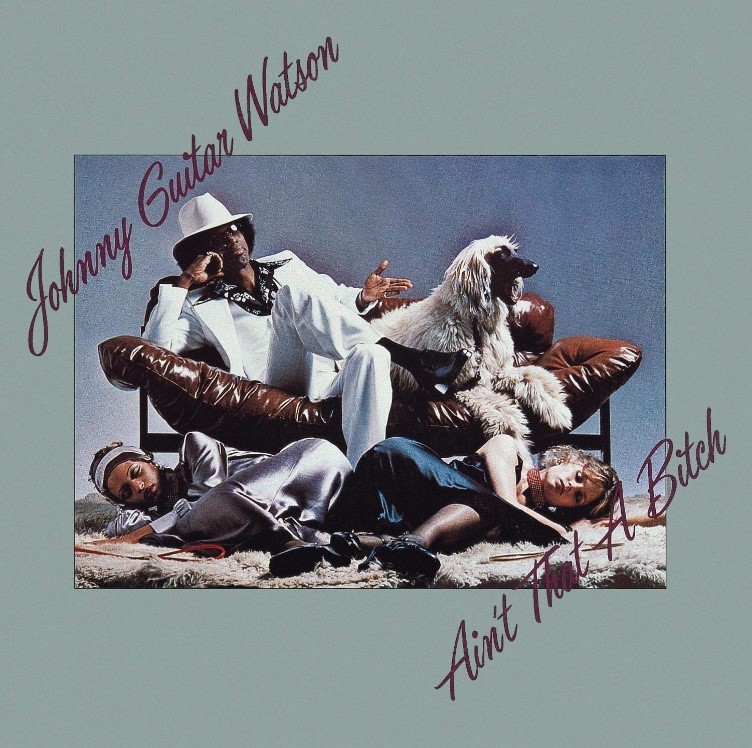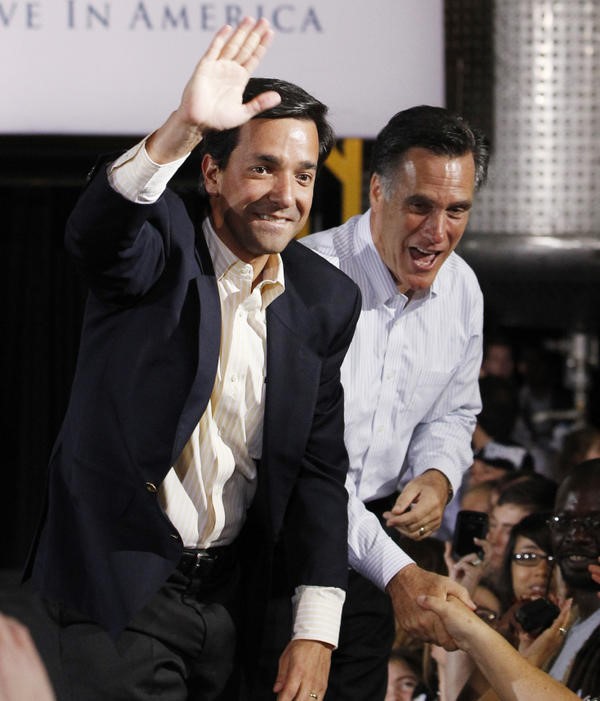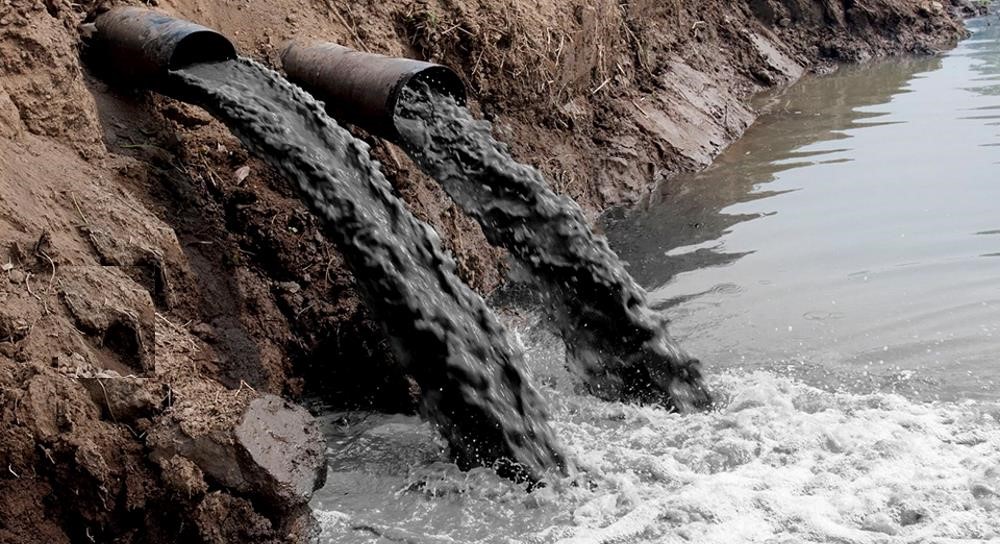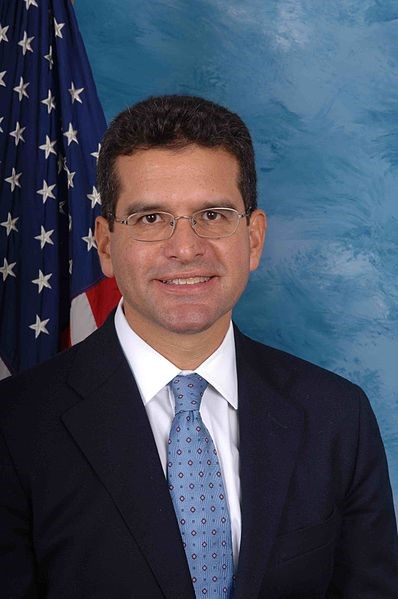WAR AGAINST ALL PUERTO RICANS
Revolution and Terror in America’s Colony
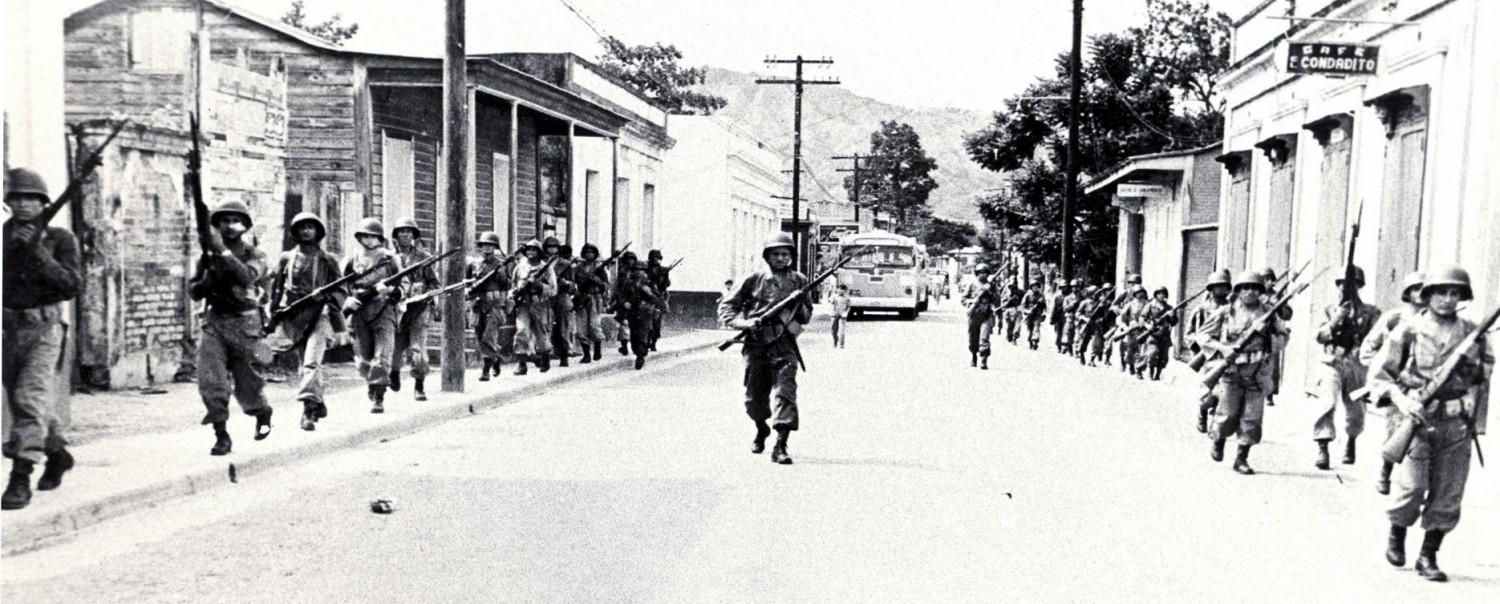
Reparations for Puerto Rico
In June 2015, when The Atlantic ran Ta-Nehisi Coates’ The Case for Reparations , the timing was impeccable.1
Edward Bernays himself could not have done better.2
Coates’s upcoming book – Between the World and Me – was already in the promotional pipeline at Penguin Random House/Spiegel Graf. It was published one year later in July 2016, and the controversy sparked by Coates’s Atlantic article provided a perfect platform for his soon-to-be published book.
The massive 15,000-word article wandered all over US and local Chicago history, but its premise was simple: 250 years of enslavement and an undeclared “war” on black families and black people, had left profound consequences on African-Americans. Therefore, they were entitled to reparations from the US government.
Coates’s article repeatedly cited a congressional bill – John Conyers’s HR 40 – which would “establish a Commission to study and develop reparation proposals for African-Americans to examine slavery and discrimination in the colonies and the United States from 1619 to the present, and recommend appropriate remedies.3
By way of “appropriate remedies” Coates invoked The Case for Black Reparations – an earlier book by Yale Law professor Boris Bittker, which argued that reparations could be determined by multiplying the number of African Americans in the population, by the difference between white and black per capita income. That number was $34 billion in 1973, when Bittker wrote his book. This “per capita income equality payment” could then be repeated each successive year, for at least one or two decades.
For Exhibit “A” Coates used North Lawndale, a black enclave in Chicago’s West Side where the homicide rate was 45 per 100,000, 43% of its people lived below the poverty line, and nearly everyone suffered from neighborhood redlining and home mortgage abuse. Coates declared that after 250 years of slavery, generations of systemic discrimination, and an undeclared yet ongoing “war” on black people and black families, the people of North Lawndale were entitled to racial reparations.
Assuming arguendo that Coates met his probative burden, then Puerto Rico must also get reparations: but theirs should be even higher per capita, and paid earlier, than those paid to African-Americans.
Here is why:
Numbers do not lie. US slavery commenced around 1618 and ended in 1868. Puerto Rico slavery began in 1494 and ended in 1873.4 That’s 379 years of slavery in Puerto Rico, versus 250 years of slavery in the US. So Puerto Ricans suffered 129 more years – 51.6 percent more years of slavery – than the US did.
The argument that “Puerto Ricans are not all descended from slaves, so they can’t all expect reparations” does not hold up for several reasons. Here’s just a few:
#1. All the original Puerto Ricans had a fate WORSE than slavery. They were exterminated.
#2. In addition to slavery every Puerto Rican – black, white, trigueño, criollo – was victimized by outright land theft*, a 40% currency devaluation, and flesh-eating loans.
Black slaves were imported to replace the exterminated Tainos. By the year 1840 there were 50,000 slaves in Puerto Rico,5 and the entire island population was roughly 400,000. In other words, 1 in 8 (12.5%) of Puerto Ricans were slaves.
This slave-to-overall population ratio in Puerto Rico was nearly identical to that in the US, with its 2.5 million slaves6 and an overall population of 19.5 million residents in 1840.7 These mainland numbers yielded the same ratio: 1 in 8 US residents were slaves in 1840.
#3 In Puerto Rico today, consumer prices are 15-20% higher for every product (food, cars, clothes, toiletries, computers, TVs, Kellogg’s Corn Flakes) than anywhere in the US mainland, due to Section 27 of the Merchant Marine Act: aka the Jones Act. EVERY Puerto Rican – black, white, trigueño, criollo – has suffered from this law since 1920 till today.8
#4 There was no minimum wage in Puerto Rico until 1937. Every Puerto Rican family – black, white, trigueño, criollo – suffered from this wage discrimination.
#5. Puerto Ricans were declared “US citizens” in March 1917, just one month before the US marched into World War I. Oh my god…what a coincidence! For over a century its men have been drafted and wounded, and killed, in every US military conflict. This includes every color: black, white, trigueño, criollo.
#6. Every Puerto Rican – black, white, trigueño, criollo – is paying the highest sales tax in the US (12.5%), paying 200% more for their electricity, breathing toxic air, suffering from a crumbling infrastructure, reeling from 400 school closures, and staggering though island-wide blackouts: and all of these are attributable to the boundless appetite of Wall Street and Washington, DC.
#7 The island’s Legislature did exactly what the Wall Street creditors and bond rating agencies demanded…
As of 2010, it has laid off over 20,000 workers; raised prices for water, gasoline and electricity; increased property, sales and small-business taxes; cut public pensions and health benefits; raised the retirement age; and closed hundreds of schools.9
From 2013 to 2014, 105 different taxes were raised in Puerto Rico.10 Every islander – black, white, trigueño, criollo – is paying for the alleged $73 billion “debt” to Wall Street.
In addition to all the above pathologies – and the 51.6 percent more years of slavery in Puerto Rico than the US – there’s two more key points:
#1 USING COATES’S OWN NUMBERS, the misery index of Puerto Rico exceeds that of North Lawndale.
The homicide rate of North Lawndale was 45 per 100,000…but the homicide rate on the island is 622 per 100,000.11
43% of North Lawndale lived below the poverty line…and today, 45% of islanders live below that same line.12
The entire island suffers from redlining, mortgage abuse and predatory lending, in every level of its infrastructure.
So when Coates declared that 250 years of slavery and an ongoing “war” on black people entitled the people of North Lawndale to racial reparations, the exact same argument applies to the people of Puerto Rico – but the Puerto Rico reparations should come first: since their slavery commenced over a century before that of the US and officially lasted 51.6 percent years longer…plus their land was stolen, their currency was devalued by 40 percent, their wages were unconstitutionally suppressed, and the war against all Puerto Ricans continues to this day.
#2 THE ARGUMENT THAT SLAVERY DID NOT EXIST in Puerto Rico when the US purchased it from Spain, and thus the US is “not responsible” for any prior harm inflicted before 1898, is completely without merit.
Here is some basic property law:
Whenever you buy a building, bridge, boat or corporation – any piece of property – the buyer assumes all the assets and liabilities of that property: including any antecedent liens, claims or debt.
And so, when the US purchased Puerto Rico, they not only assumed the island’s wealth. They also assumed responsibility for all of its antecedent debt. If the US owes reparations on the mainland for injuries inflicted by slavery, it must owe the same reparations for the depredations of slavery in Puerto Rico.
In addition, the US cannot claim any defense of “surprise” or “latent defect” in the Puerto Rican psyche and character since they – the US – were entirely on notice: they knew the public record of prior slavery in Puerto Rico. It was a fully disclosed historical fact, and the consequences of that fact run with the property. They are completely assumed by the buyer: in this case, the US. Accordingly, I do not resent Coates’s cry for racial reparations. I welcome it. Because by every conceivable measure, and using the same yardsticks, the crimes committed against Puerto Rico are more pervasive, pernicious and permanent, than the crimes committed against Afro-Americans in the US.
And so…
If and when the US starts ladling out those reparations…
Puerto Rico belongs at the front of the line.
1Ta-Nehisi Coates, “The Case for Reparations,” The Atlantic, June 2014.
2 Author of the 1928 book Propaganda, Edward Bernays lived a long and influential life. When he died at age 103, his New York Times obituary named him “the father of public relations.” See “Edward Bernays, ‘Father of Public Relations’ and Leader in Opinion Making, Dies at 103;” The New York Times, March 10, 1995.
He was also named one of the “100 most influential Americans of the 20th Century” by Life Magazine. See Stuart Ewen, PR! A Social History of Spin; Chapter One: Visiting Edward Bernays (New York: Basic Books, archived from the original on Sept. 5, 2008). See also: Larry Tye, The Father of Spin: Edward L. Bernays and the Birth of Public Relations (New York: Crown Publishing Group, 1998)
Bernays’s corporate clients included CBS; Procter & Gamble; the American Tobacco Company; United Fruit; Cartier, Inc.; General Electric; Dodge Motors and the NAACP. Individual clients included Herbert Hoover, Calvin Coolidge and Al Jolson.
Bernays pioneered the linkage of large-scale cultural movements and political events, with the presentation and sale of consumer products. For example – ever-mindful of tectonic shifts in US popular opinion – he drew energy from the women’s suffragist movement by arranging for a contingent of beautiful ladies to march and smoke “Torches of Freedom” (i.e., cigarettes) during the 1929 Easter Sunday Parade in New York City. The resulting publicity led to an immediate spike in female smokers throughout the US.
Bernays was the nephew of Sigmund Freud, and frequently corresponded with him. This may account for his acute awareness and mastery of the use of psychology, to influence mass behavior.
3 House Resolution 40, “Commission to Study and Develop Preparation Proposals for African-Americans Act,” 115th Congress (2017-2018), https://www.congress.gov/bill/115th-congress/house-bill/40
4 Francisco A. Scarano, Sugar and Slavery in Puerto Rico, 1800-1850 (Madison: Univ. of Wisconsin Press, 1984) 5-23; Jose Curet, From Slave to “Liberto”: A Study on Slavery and its Abolition in Puerto Rico, 1840-1880 (New York: Columbia University Press, 1974) 37-48; Jorge Chinea, “Race, colonial exploitation and West Indian immigration in nineteenth-century Puerto Rico, 1800-1850,” Americas, Vol. 52, Num. 4: 1-10.
5 Francisco A. Scarano, Sugar and Slavery in Puerto Rico, 1800-1850 (Madison: Univ. of Wisconsin Press, 1984) 5-23; Jose Curet, From Slave to “Liberto”: A Study on Slavery and its Abolition in Puerto Rico, 1840-1880 (New York: Columbia University Press, 1974) 37-48; Jorge Chinea, “Race, colonial exploitation and West Indian immigration in nineteenth-century Puerto Rico, 1800-1850,” Americas, Vol. 52, Num. 4: 1-10.
6 Leon F. Litwack (1958), “The Federal Government and the Negro, 1790–1860”, Journal of Negro History, 43 (4): 261–78, 263–68 and additional sources cited therein.
7 U.S. Census, “1840 Overview,” https://www.census.gov/history/www/through_the_decades/overview/1840.html
See also: Online Records and Indexes: U.S. Census; “1840 U.S. Federal Census”; https://www.cyndislist.com/us/census/1840/online/
8 Nelson Denis, “The Jones Act: The Law Strangling Puerto Rico,” New York Times, September 25, 2017.
9 Nelson Denis, “Free Puerto Rico, America’s Colony,” New York Times, August 6, 2015.
10 Nelson Denis, “Taxing Puerto Rico to death,” Orlando Sentinel, January 10, 2018.
11 https://www.insightcrime.org/news/analysis/insight-crime-2019-homicide-round-up/
12https://www.pewresearch.org/fact-tank/2014/12/12/racial-wealth-gaps-great-recession/ (2013);
https://aspe.hhs.gov/2019-poverty-guidelines (2018).
.
For a history of the War Against All Puerto Ricans, read the book…
How Puerto Rico is Being Enslaved: Part III
Puerto Rico has a new national anthem. Originally recorded by Johnny Guitar Watson in 1976, it expresses the new national spirit and political consciousness of Puerto Rico in 2021. The anthem is called Ain’t That a Bitch and you can hear it on the YouTube link under this photo.
In particular, listen at: 0:30 – 2:00 and 3:38 – 4:55.
Nearly everyone on the island is feeling the same way as JG Watson:
They’re working poor folks to death
When you pay your rent and car note
You ain’t got a damn thing left
Ain’t that a bitch
Somebody doing something slick
Downtown
The latest slick move from downtown is a “Restructuring Support Agreement” (RSA) executed on May 3, 2019 by PREPA, the Puerto Rico Fiscal Agency and Financial Advisory Authority (AAFAF), Assured Guaranty Corp. (AGC), Assured Guaranty Municipal Corp (AGMC), an Ad Hoc Group of PREPA bondholders (the “Ad Hoc Group”) and the Financial Control Board (aka “La Junta”).
This RSA calls for the issuance of more bond debt – $8.3 billion – in order to pay off the bondholders. This debt will be paid by the people of Puerto Rico via a so-called “transition charge” which starts at 2.7 additional cents per kilowatt hour and eventually rises to 4.55 cents. Amazingly, even PREPA customers who install rooftop solar panels will have to pay this “transition charge,” even on the solar energy which they themselves generate. The PREPA customers will also be legally obligated to buy – at their own expense, roughly $1,000 – an additional meter which measures the amount of solar power they are generating and using.
According to Mike Henchen, a utility system expert at the Rocky Mountain Institute, he is unaware of any utility in the US that charges its customers for solar power that they did not generate. In other words (mine, not Henchen’s) this RSA is a shakedown: a familiar phenomenon at PREPA.
In recent years, reports have shown that 1) for decades, PREPA used illegal toxic sludge oil instead of EPA-compliant petroleum and falsified over 600 lab reports to avoid detection, and 2) from 2009 to 2013, during the Fortuño administration, PREPA issued seven successive AA bonds: and 80% of each bond was used to pay off the interest – not the principal, just the interest – on the immediately preceding bond. This Ponzi scheme practice was consistent with Fortuño’s orgy of debt. In his one and only four-year term, Fortuño saddled the island with more debt than any other governor in Puerto Rican history: over $14 billion.
And now, the people of Puerto Rico will pay for this reckless debt: with higher tolls on privatized highways and bridges, higher tuition in charter schools, higher water rates, and the highest electricity rates in all the US. The current island rate, even before the RSA, is already 22 cents per kilowatt hour…and within three years (2024) Puerto Ricans will pay 30 cents per kWh…an overall rate hike of 73%. Then, as reported by London Economic International (LEI), the electricity rates will more than double again – to 64.5 cents per kWh – by 2036. This is nearly triple what they are today: inflicted on a vulnerable population whose per capita income is half that of Mississippi, the poorest state in the US.
The RSA’s grip on the island will span two generations. Under its $8.3 billion settlement terms, the “transition charge” will be paid every year, for the next 47 years.
Ironically, this de facto serfdom arrives at the same time that Sen. Chuck Schumer and Rep. Nydia Velasquez announced a FEMA grant of $9.46 billion for PREPA’s development of “clean, renewable electricity.” But in a Citizens United world – with both the Governor and Resident Commissioner deeply committed to LNG interests, and with multi-billion dollar fuel contracts at stake – it is only a matter of time before those FEMA monies enter a black hole of lobbyists and influence peddling, all powered and protected by the highest authority: the US Supreme Court, via its Citizens United decision.
Ultimately, the Financial Control Board (La Junta) will exercise jurisdiction over that $9.46 billion and funnel it toward the bondholder debt, the LNG tsunami…and of course, a few shekels will find their way into Gov. Pedro Pierluisi’s pocket.
Because in Puerto Rico, somebody is always doing something slick.
Downtown.
.
For a history of the War Against All Puerto Ricans, read the book…
How Puerto Rico is Being Enslaved: Part II
In 2019, with much fanfare, the government of Puerto Rico enacted a law which committed the island to 100 percent renewable energy by 2050. The press emphasized that the system would rely on solar arrays powering distributed microgrids, so that if infrastructure went out on one part of the island (especially during a hurricane) it wouldn’t impact other areas.
But now in 2021, this “commitment” is all smoke and mirrors: with Gov. Pierluisi building a Liquid Natural Gas (LNG) infrastructure for PREPA which locks in a centralized power grid and forced consumption of LNG for decades to come. His plan is already being implemented with three LNG processing plants – built seemingly overnight – in San Juan (the Cabo Seco plant), Mayaguez and Yabucoa.
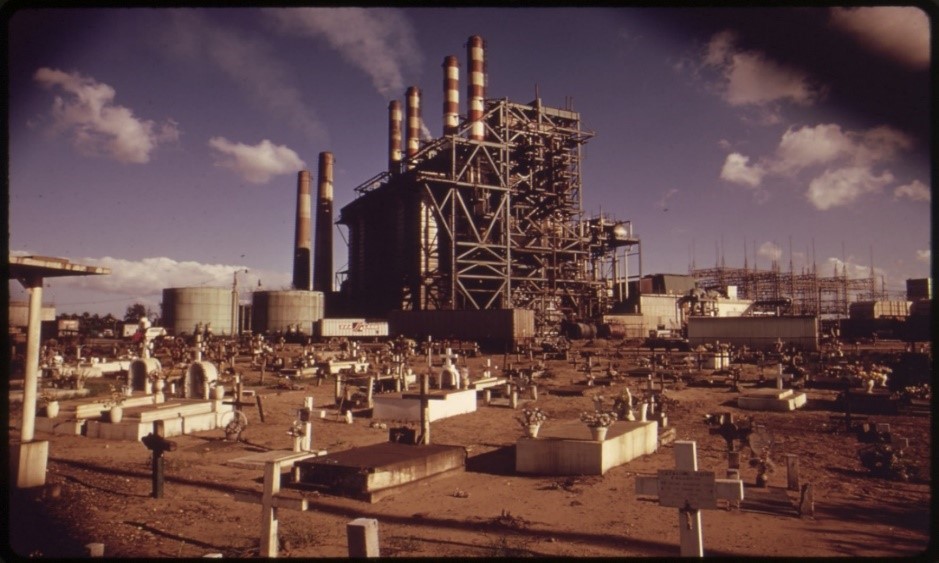
This “bait and switch” is nothing new in Puerto Rico. In December 2017, the Puerto Rico legislature introduced this bill to shift 50 percent of the island’s power to renewable energy by 2050:
https://sutra.oslpr.org/osl/esutra/MedidaReg.aspx?rid=124926
But the very next month, in January 2018, then-Gov. Ricky Roselló announced that PREPA (the Puerto Rico Electric Power Authority) would be privatized. This move, combined with “financial management” from the Financial Control Board, ended the island’s “shift” to renewable energy.
Puerto Rico’s power grid is managed by PREPA and fueled by foreign oil. This bears repetition: all of the electricity in Puerto Rico is generated by imported foreign oil, coal and LNG.
The island has no oil reserves of its own, so residents are utterly dependent on foreign oil, coal and LNG…to light their highways; run their water reservoirs; re-charge their computers; power their homes, stores, churches, office buildings, supermarkets, shopping malls, factories, schools, hospitals, refrigerators, air conditioners, and electric-powered cars.
As of 2020, the proportions are as follows: 49.5% petroleum, 29% LNG, 19% coal, and 2.5% renewable energy.
See for yourself: https://www.eia.gov/state/analysis.php?sid=RQ
I’ll say it yet AGAIN…currently in Puerto Rico, ALL of their electricity depends on imported oil, coal and/or LNG. For this reason, the development of alternative power sources (sun, wind, water) would not only generate energy for Puerto Ricans.
It would begin to generate their independence.
They would no longer depend on the outside world for all their energy needs.
The people of Puerto Rico are aware of this. Over the past four years, in the aftermath of Hurricane Maria and a six-month island-wide electrical blackout, there has been a groundswell of support to phase out PREPA and phase in the development of cheaper, more reliable alternative energy sources. This is quite feasible: since wind, sun, and ocean water surround Puerto Rico on all sides!
And so, Gov. Pierluisi has a historic opportunity and a personal choice: between the future of his people, and the future of his personal finances. Worldwide, the price of renewable energy (sun, wind, water) will soon drop. But Puerto Rico does not have the resources to build out one island-wide energy grid, and then replace it with another one just a few years later. If Pierluisi continues his aggressive “shock capitalism” and rams LNG down Puerto Rico’s throat, he will imprison the island into an LNG economy, and doom it to decades of fossil-fuel slavery.
The true independence of Puerto Rico – if it is ever to exist – can only begin with this one thing: Gov. Pedro Pierluisi must abandon his drive to become a billionaire, by enslaving Puerto Rico to LNG.
He needs to resign himself to being a mere millionaire…
and allow the sun, the air, and the waters of Puerto Rico, to power the island.
.
For a history of the War Against All Puerto Ricans, read the book…
How Puerto Rico is Being Enslaved: Part I
Pedro Pierluisi was a pit bull attorney. He won $180 million in damages for the government of Peru and was, from 1993 to 1997, the Secretary of Justice of Puerto Rico. But he never made any real money until 2008, when he became the island’s Resident Commissioner.
A “Resident Commissioner” is a non-voting member of US Congress. They can attend committee hearings and introduce legislation. They can’t vote on any bills, not even their own…but in restless hands, the position can be a US Treasury printing press. Pedro Pierluisi printed early and often.
He knew that oil companies have kicked back hundreds of millions of dollars to Puerto Rico politicians. So if Pierluisi could, single-handedly, shut out those oil companies and make liquid natural gas (LNG) the principal energy source for PREPA, the LNG industry would make him as rich as Croesus.
As far back as 2013, with Orwellian suavete, Pedro Pierluisi was pushing Jones Act “reform” bills for the LNG industry…but this “reform” was actually a Jones Act scam: keeping nearly every portion of Jones firmly planted on Puerto Rico’s neck, while using it to carve a surgically precise monopoly for his LNG sponsors and their chartered ships.
Feverishly, he arranged congressional hearings (“This is the sixth hearing in the past 11 months!” he reminded everyone) with one obsessive purpose: to make Liquefied Natural Gas the fuel for all of PREPA.
Year after year he announced that:
“PREPA must switch from a heavy reliance on petroleum fuel to a greater dependence on… domestic Liquefied Natural Gas (LNG) from the U.S. Gulf.”
He also demanded that:
“Congress should enact my legislation, the Puerto Rico Interstate Commerce Improvement Act, in order to increase the number of maritime vessels authorized to transport LNG and liquified petroleum gas (LPG) from ports in the U.S. mainland to ports in Puerto Rico.”
On January 12, 2016, at a hearing before the House Committee on Natural Resources, Pierluisi supported “the creation of a board to help the Puerto Rican government improve its fiscal practices” and then again, ad nauseam, he reminded the congressmembers that they “should enact my legislation to increase the number of ships qualified to transport LNG from the states to Puerto Rico.”
But hey…wait a minute…
Isn’t LNG largely obtained by fracking, with severe environmental consequences? Such as methane and nitrogen oxide emissions, extreme global warming, and requiring 1.5 million gallons of water per well?
And don’t those millions of gallons become toxic “frack fluid,” which gets poured back into the water supply?
Isn’t Puerto Rico desperately trying to end its energy dependence on foreign, overpriced, and toxic fossil fuels?
This did not matter to Pierluisi. He sailed on like Captain Ahab, obsessed with his mission, eyes glued to the great white whale of LNG…and the vast fortune it would disgorge upon him.
Fast forward several years.
Today, Pierluisi is the Governor of Puerto Rico and PREPA is building three new LNG import terminals in San Juan, Mayaguez and Yabucoa.
Today, when PREPA releases any RFPs for fuel options, one of those options must always be LNG.
Today, PREPA expects LNG to provide 45-50% of all their power generation within five years. Its recent CEO, Jose Ortiz, touted LNG as “the best, cleanest option to cure PREPA’s over-dependence on oil.” His successor, interim CEO Efran Paredes-Maisonet, espouses the same view. Simply stated: Gov. Pierluisi, CEO Ortiz, and interim CEO Paredes-Maisonet are planning to replace diesel with LNG, throughout the entire energy grid of Puerto Rico.
Over the next few days, I will detail how Gov. Pierluisi is enslaving the entire island for generations to come.
.
For a history of the War Against All Puerto Ricans, read the book…
Today, Sunday June 14…the National Puerto Rican Day Parade is alive and well…on WABC TV!
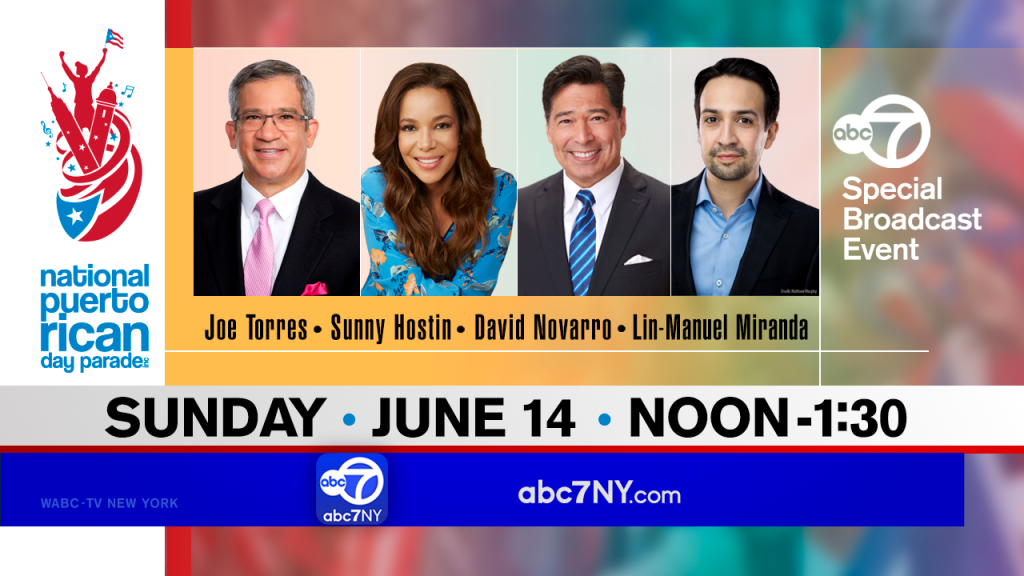
.
Fifty years ago, Muhammad Ali was pummeled by George Foreman and Joe Frazier: but he still beat them. He adjusted to every dynamic – the temper of his opponents, the limits of his aging body, the politics of his career – and the wisdom and quality of those adjustments marked an astounding human evolution. They made him a worldwide legend. Someone that we all admire and respect.
The National Puerto Rican Day Parade (NPRDP) is showing those same qualities.
Their board of directors is maturing and developing new layers of integrity. A case in point is Neysa Alsina, a brilliant attorney who helped steer the Municipal Credit Union through three years of record-breaking prosperity, and was the Senior Policy Advisor to Rep. Nydia M. Velázquez (NY-7).
I personally witnessed her subtle yet firm navigation of a complex Jones Act exemption for Puerto Rico. While serving as counsel for the New York City Bar, Alsina quietly steered this reform measure: with such calm dexterity, and such compelling logic, that the New York City Bar Association, the New York State Bar Association, and the American Bar Association (ABA) all announced a collective demand for Jones Act relief in Puerto Rico.
Alsina is now a board member of the New York Puerto Rican Day Parade, and she is managing their scholarship program as well: which extends $200,000 annually, in aid to exceptional Puerto Rican students.
Through her intellect and character, Attorney Neysa Alsina will accelerate the evolution of the board, and the historic footprint of our parade.
Another sign of the NPRDP’s resilience and capacity for adjustment, is what is happening TODAY…
Sunday, June 14.

Due to the coronavirus pandemic, the NPRDP The cannot march up Fifth Avenue this year…but they still managed to keep the parade alive!
An exciting 90-minute community celebration will take place on today. June 14, at noon.
The official parade program will be hosted by WABC-TV anchors Joe Torres and David Novarro, along with “The View” co-host Sunny Hostin.
Confirmed artists include Lin-Manuel Miranda, Rosie Pérez, Esai Morales, Gilberto Santa Rosa, La India, Victor Manuelle, Ivonne Coll, Pedro Capo, Anthony Ramos, Ariana DeBose, Kany García, and many others.
The celebration will also showcase winners of the NPRDP Scholarship program and serve as a fundraiser for the scholarship fund: the program that is now managed by Neysa Alsino.
For four consecutive years, the NPRDP has awarded $200,000 to 100 exceptional high school seniors and college freshmen, sophomores and juniors of Puerto Rican descent.
The National Puerto Rican Day Parade Celebration will broadcast on WABC-TV, Channel 7 from 12:00 p.m.-1:30 p.m. on Sunday, June 14. It will also be streamed on the station’s website abc7ny.com as well as on the station’s free news and connected TV apps on Amazon FireTV, Android TV, Apple TV, and Roku.
THAT is a parade that refuses to quit. THAT is a board that is energized and focused. Congratulations to the leadership of the NPRDP. During these tragic times they are adjusting…evolving…and bringing some our finest leaders on board.
